We set course south. We leave Tower Island and Trinity Island to starboard. The uncomfortable weather and numerous icebergs remain our companions. Spotlights are installed on the bow for the night. It starts to snow in the evening. In the light of the bow floodlights, the strong wind blows the snowflakes into white horizontal stripes, stroboscope-like. Visibility is zero. We leave the lights off and prefer to stare into the darkness. With the help of the radar, we work our way south through the night. The dawn takes its time. The watch at the helm becomes a test of patience. Only slowly do the first shadows of the icebergs emerge from the darkness, so that we can finally rely on our eyes again. The snow from the previous night covers everything on deck white and wet. Shoveling snow is the order of the day.
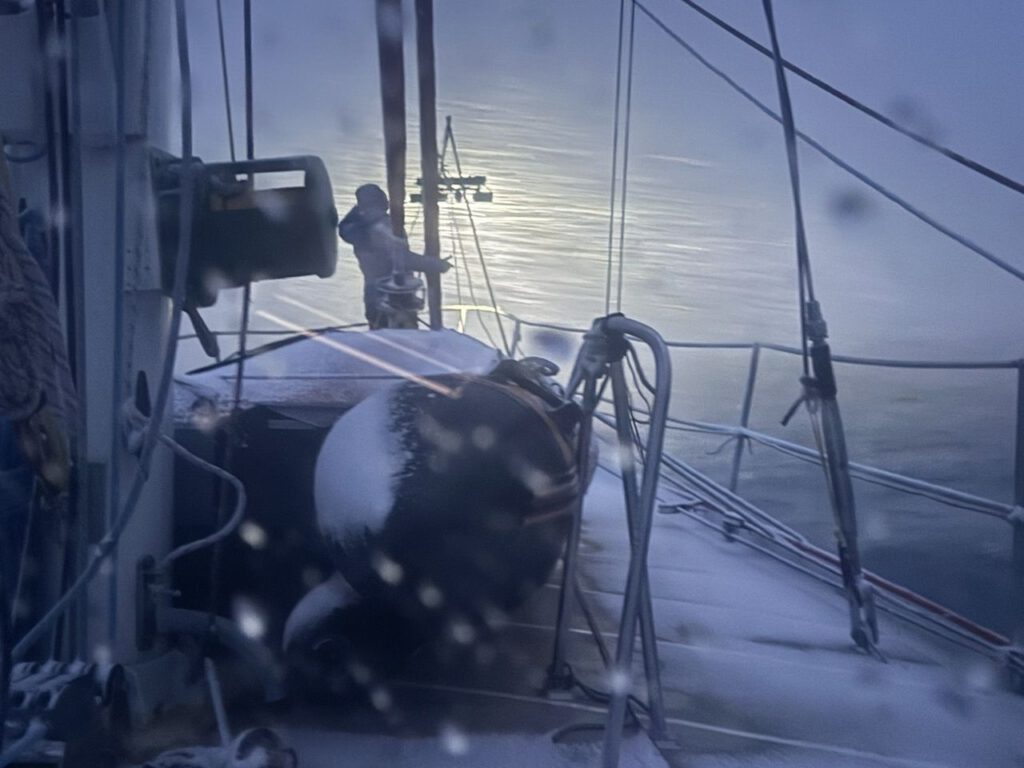
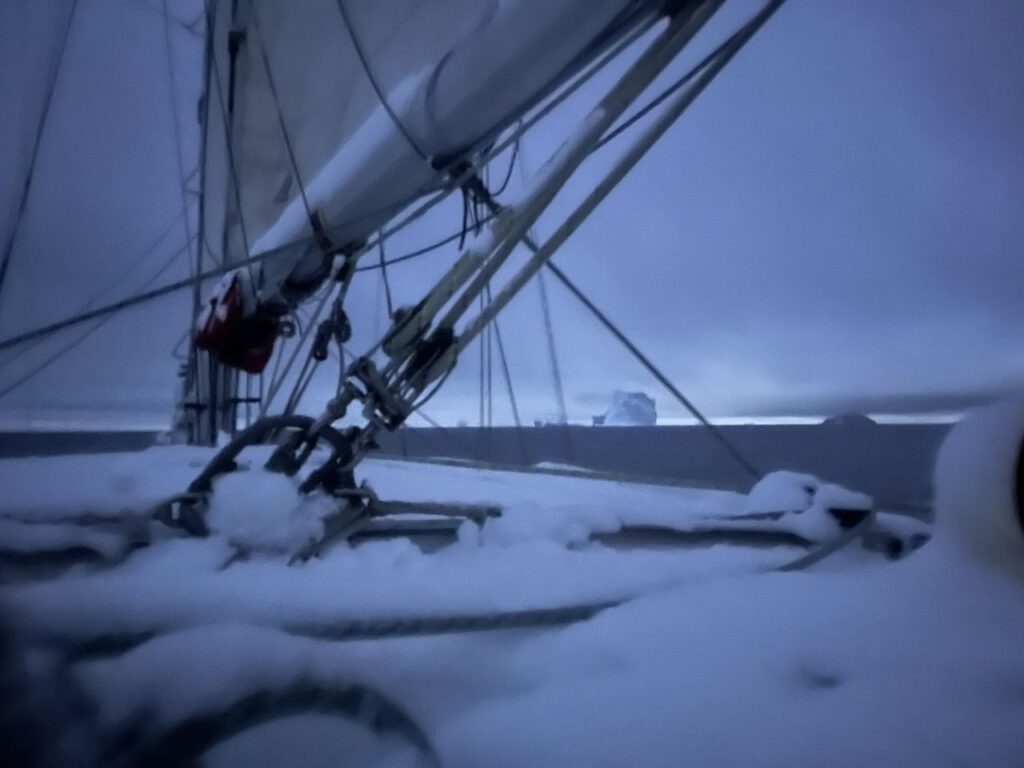
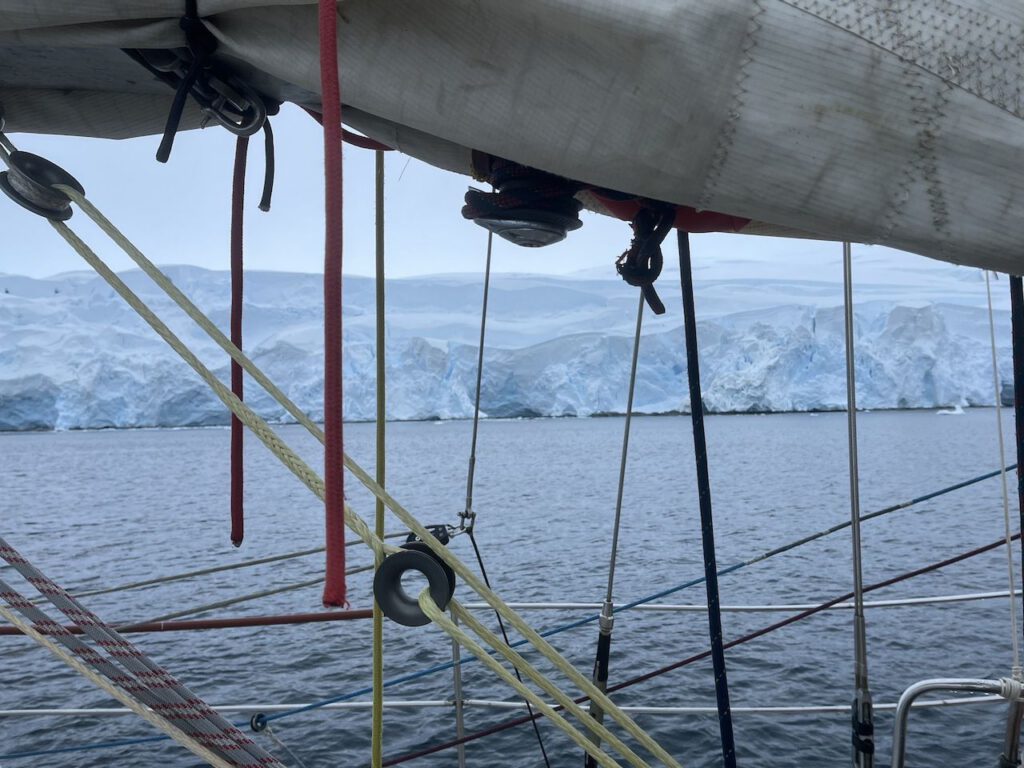
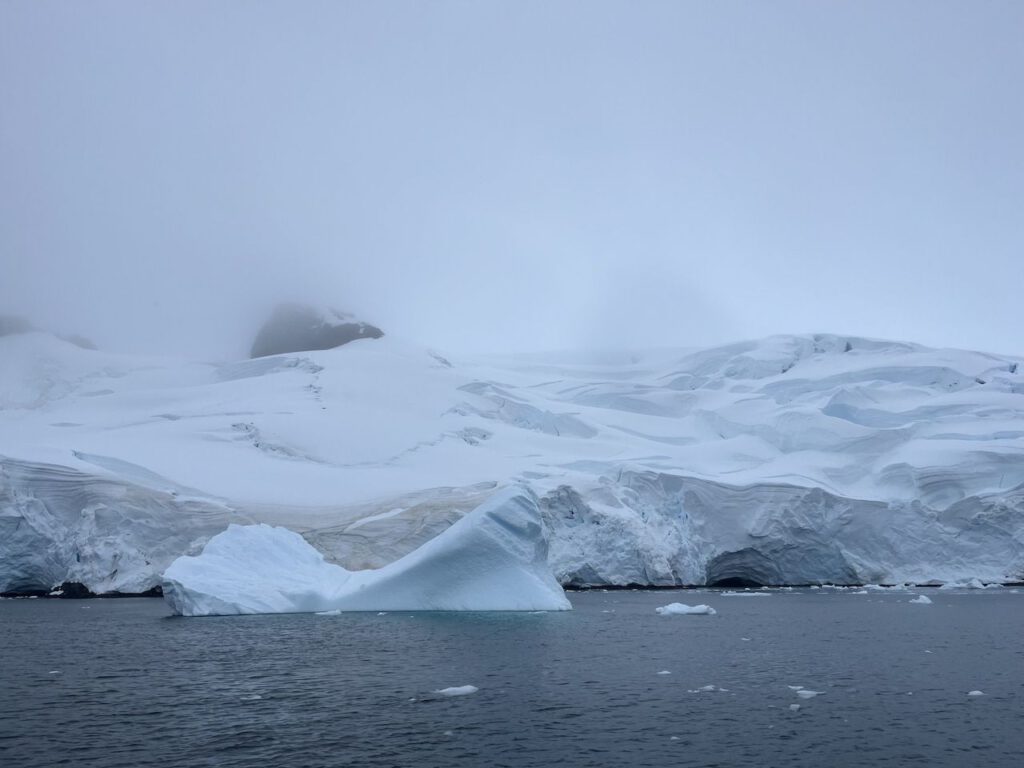

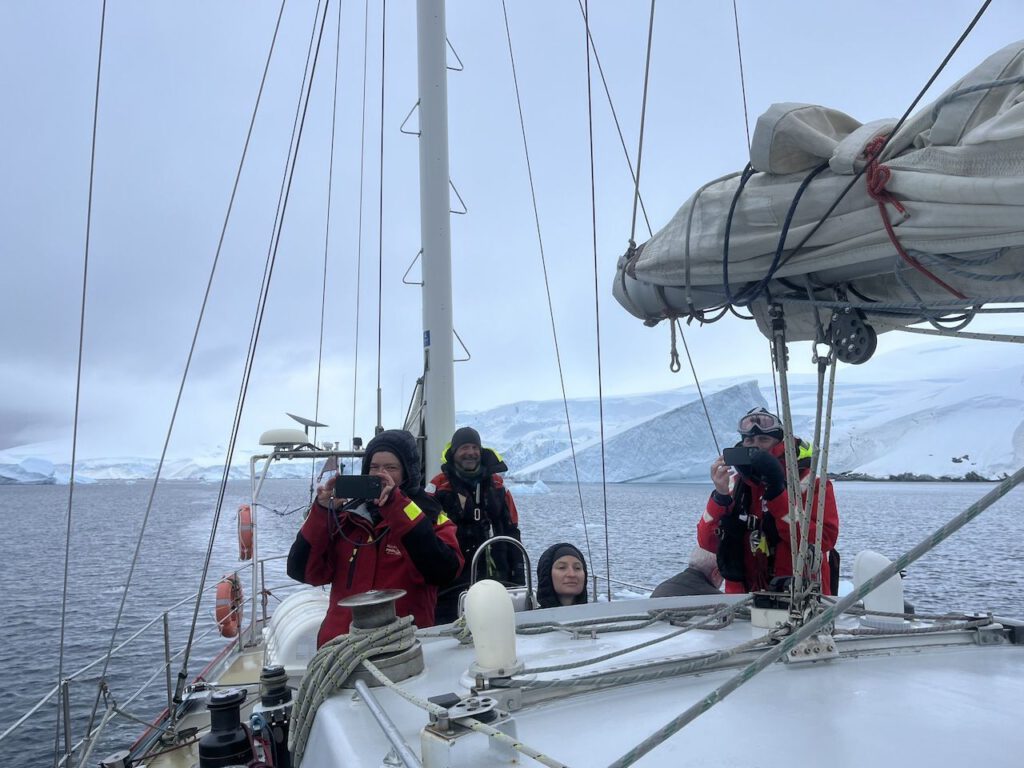
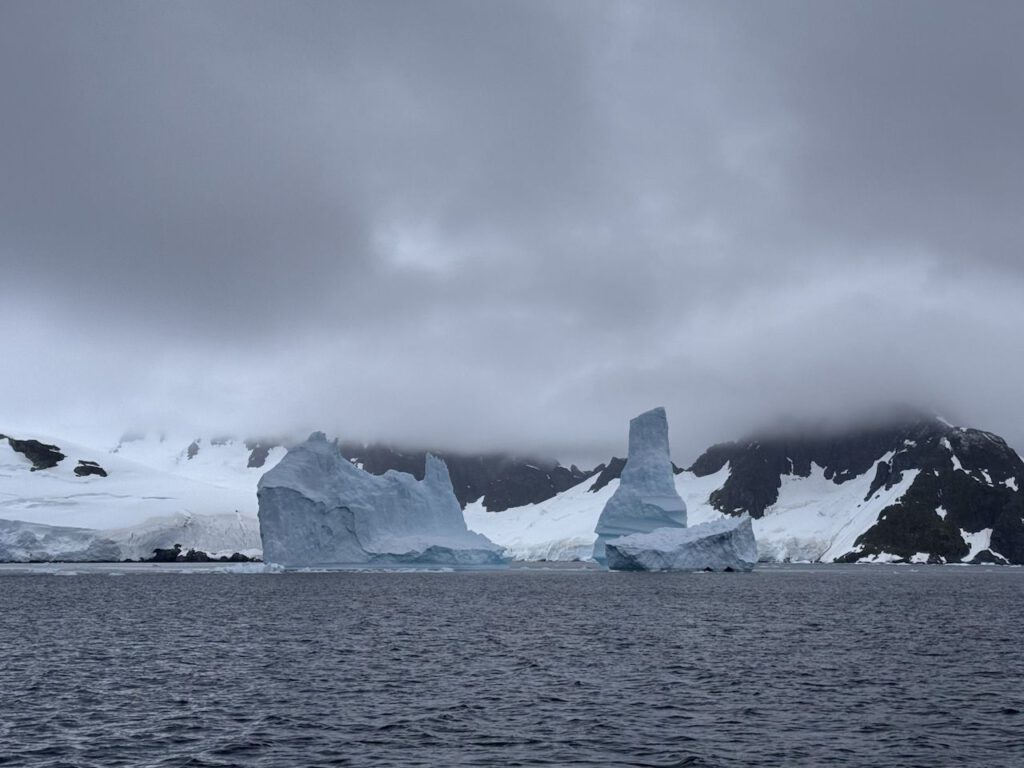
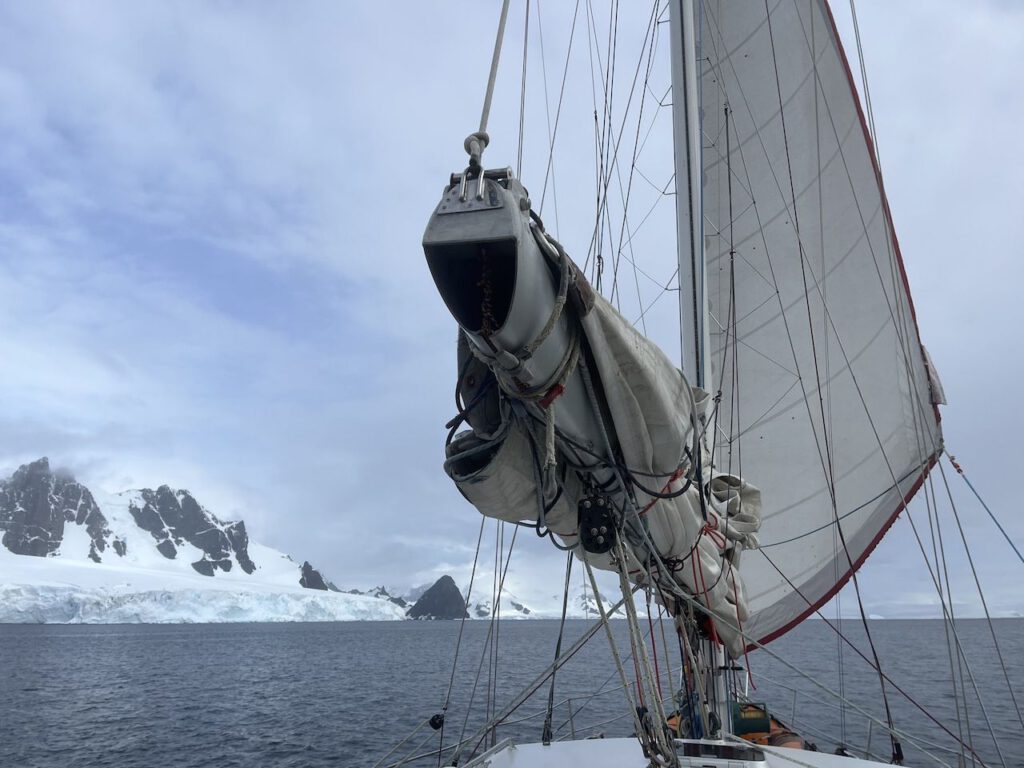
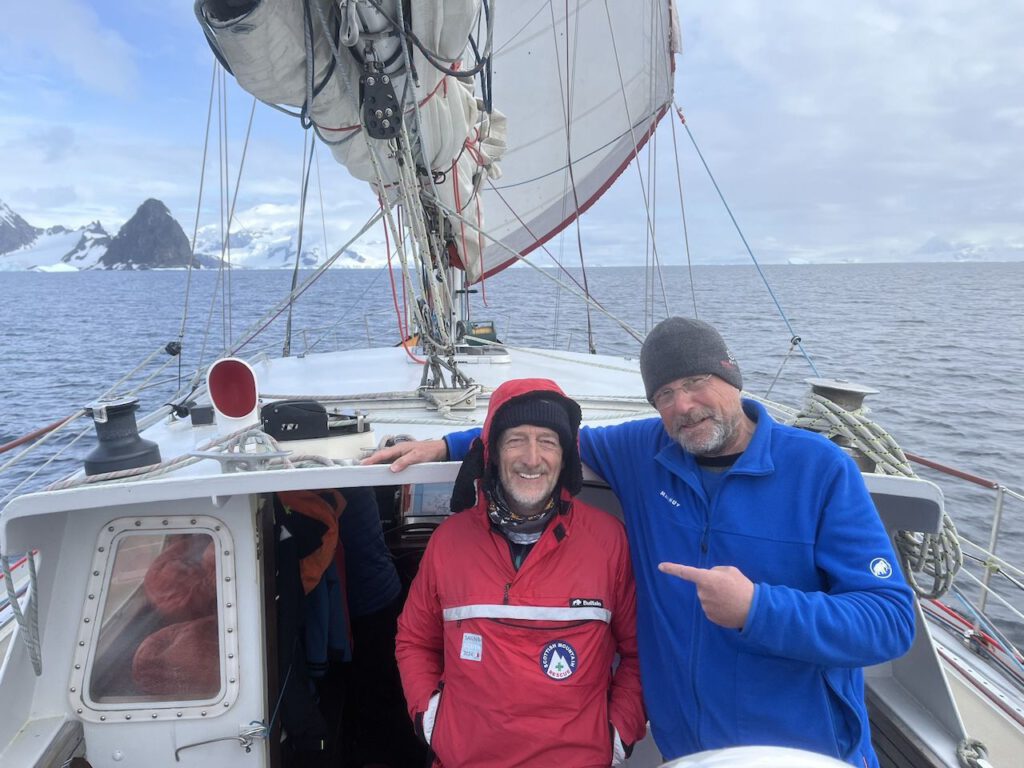
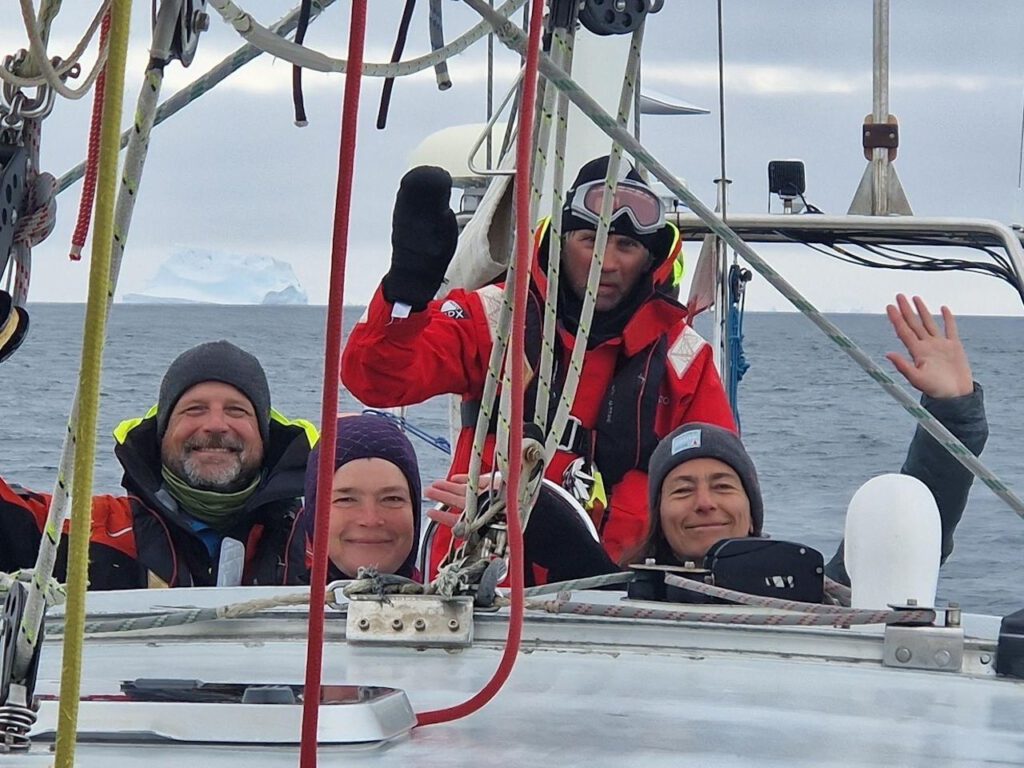
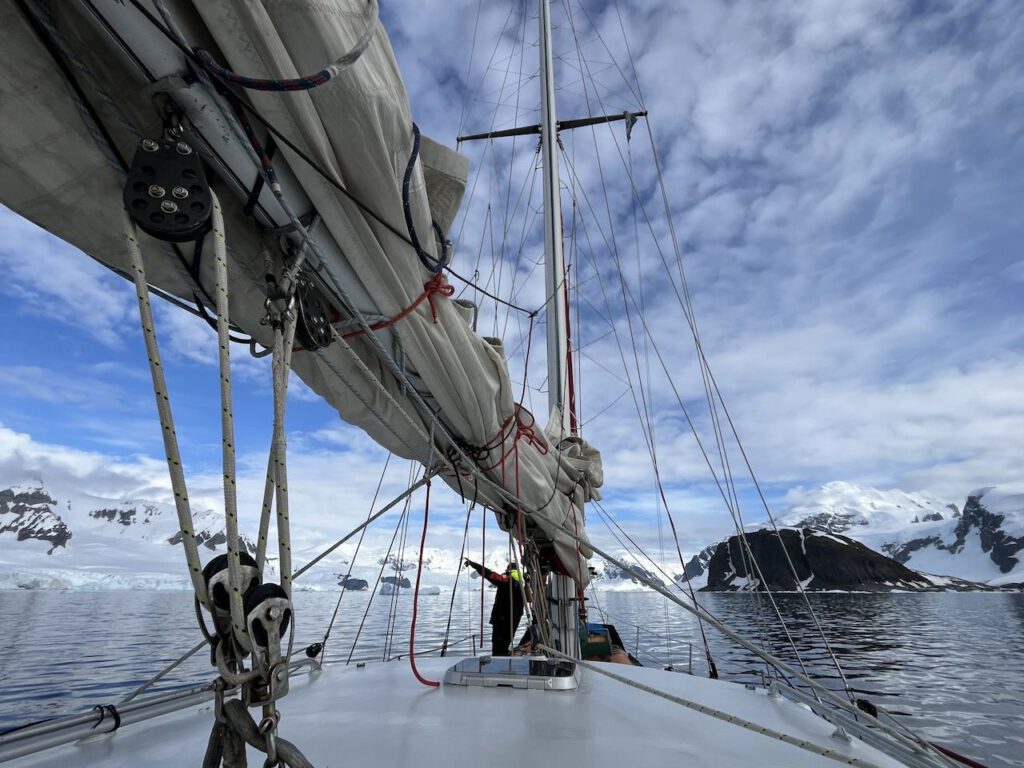
The daylight returns, it clears up a little, even the sun makes an appearance. We slowly approach the well-visited part of Antarctica and occasionally encounter a cruise ship. For the most part, however, it is whales that we see in the Gerlache Strait. They usually come towards us, passing us at some distance to the north. Often individually, sometimes in pairs, every quarter of an hour. At some point we stop counting and the rower’s loud call of “whale” is heard only rarely.
We stop briefly at Cuverville Island in the afternoon. The sun shines over an alpine glacier backdrop. The scenery is fantastic, penguins are calling and jumping around, the island is ablaze with colorful lichens and mosses. We meet the Spirit of Sydney and anchor near her. Darrel’s yacht would also have been an option for us – but we are very happy to have opted for the Selma.
On a small island lies the wreck of a small wooden boat next to a huge rusty chain – the question of how the two fit together cannot be answered, they are probably remnants from whaling times. A Gentoo penguin (gentoo penguin) colony lives on Cuverville. We go ashore and have time to observe the colorful hustle and bustle. Here, too, there are numerous chicks, hungrily hurrying after their parents, indecisive swimmers, curious specimens who may be surprised at us strange giant penguins. A penguin highway – a narrow track in the snow – leads up the hill. It looks funny when the little guys hike up, especially when they come towards each other and decide who gets to pass the other first.


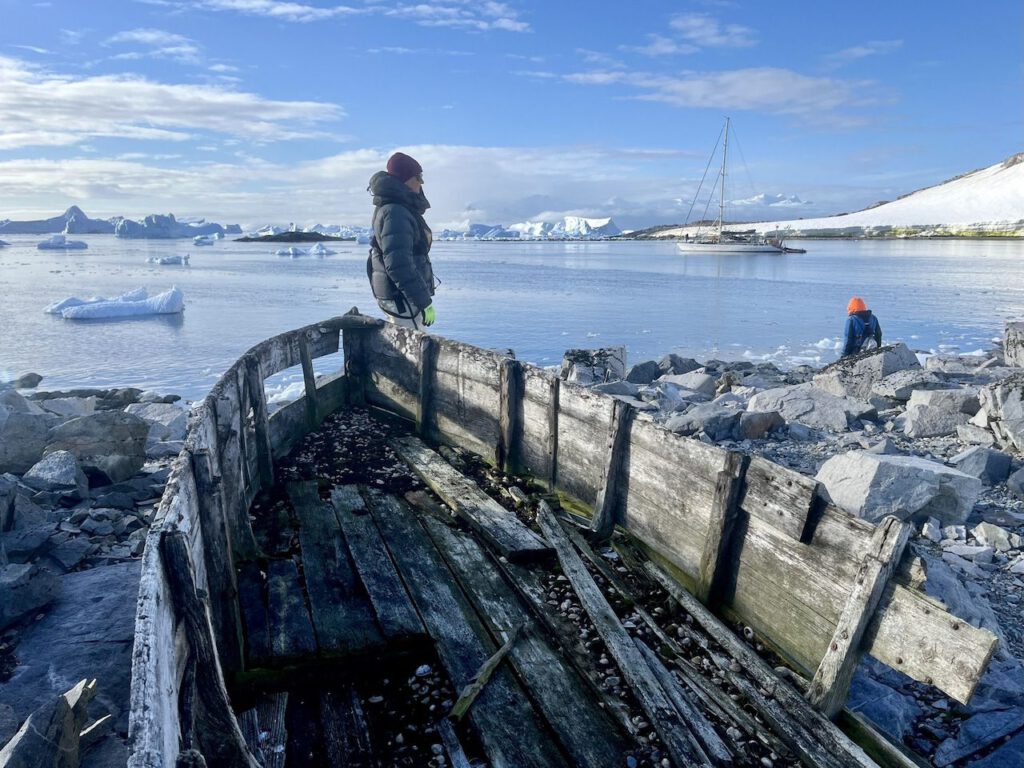

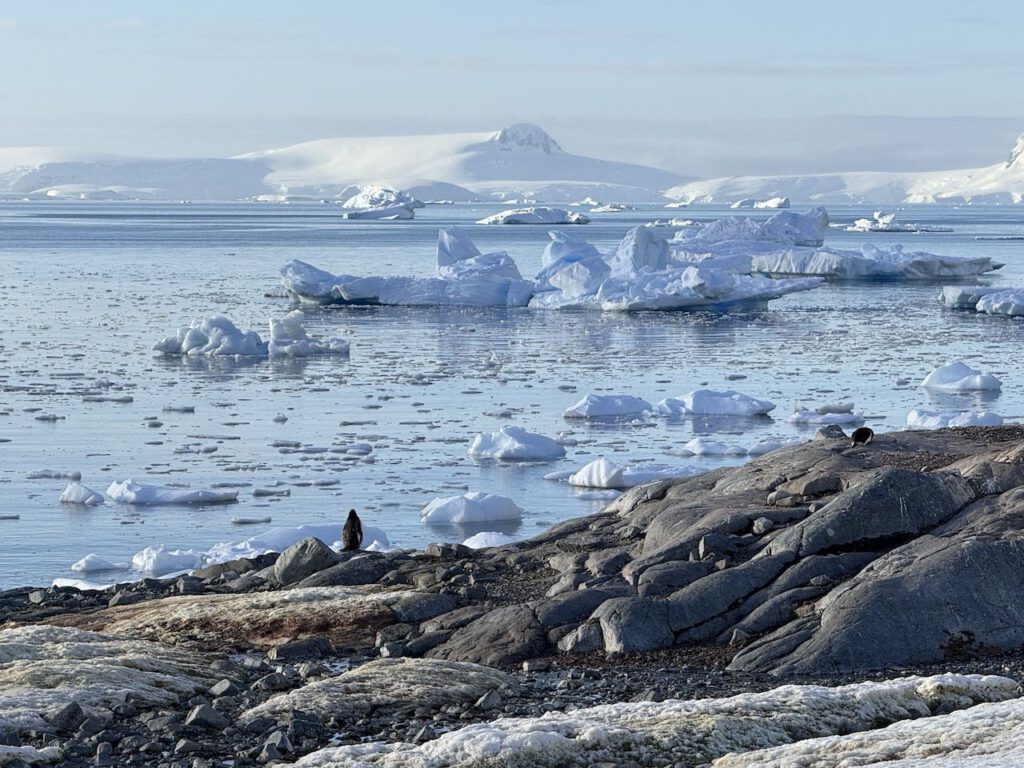
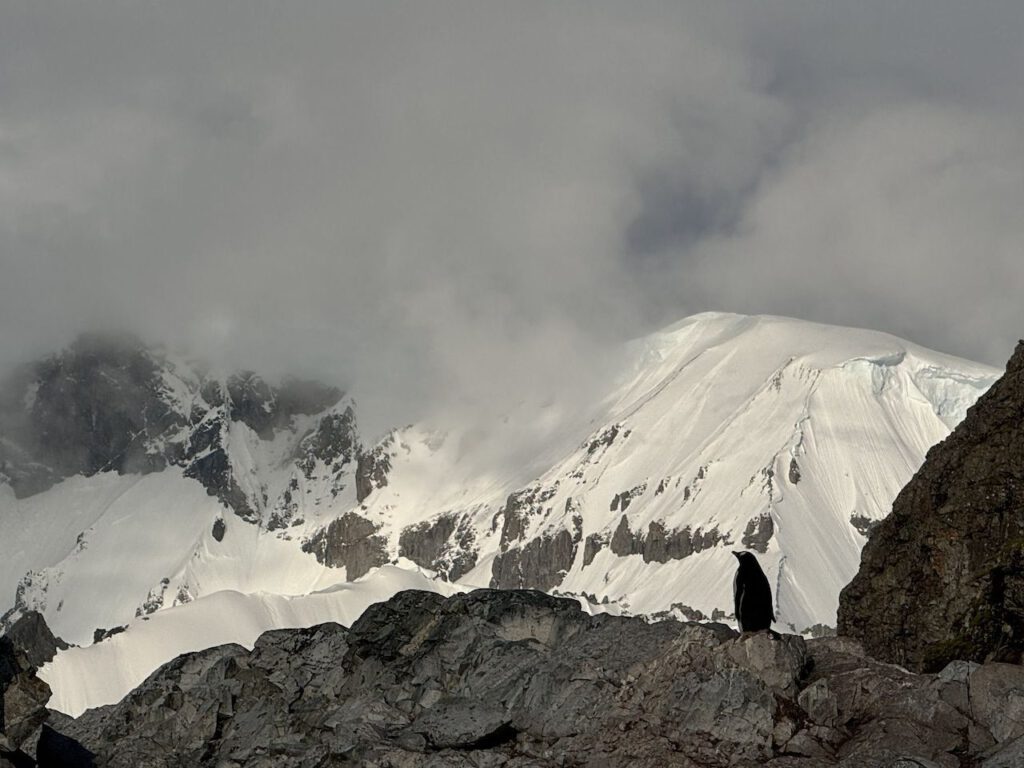
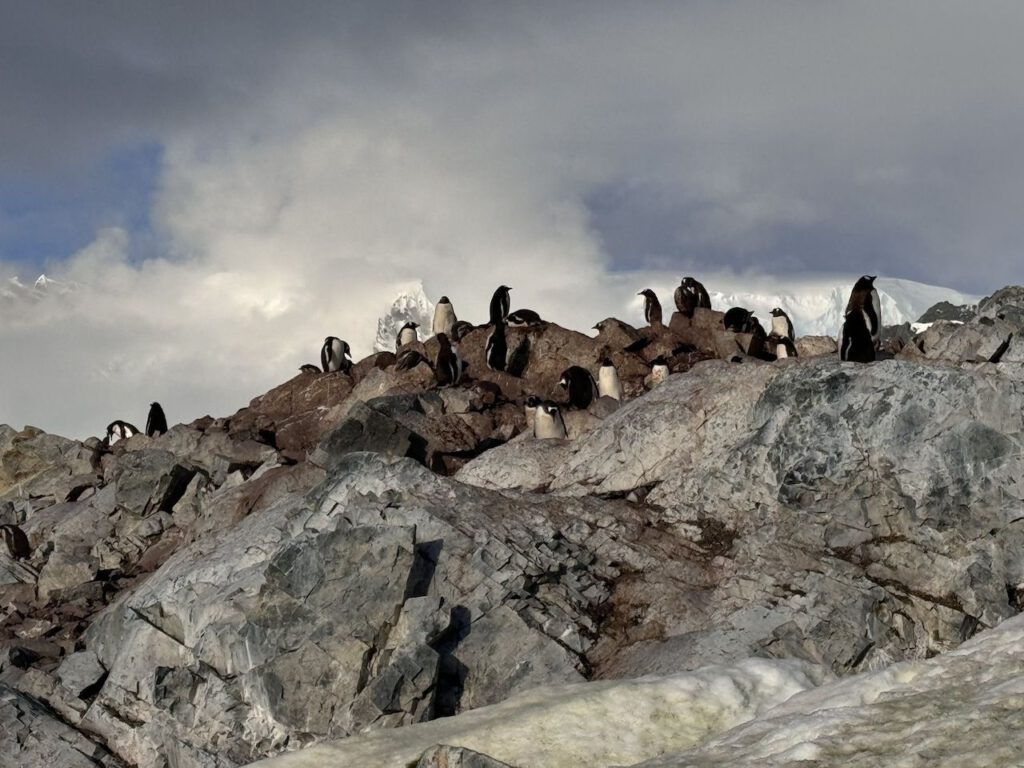


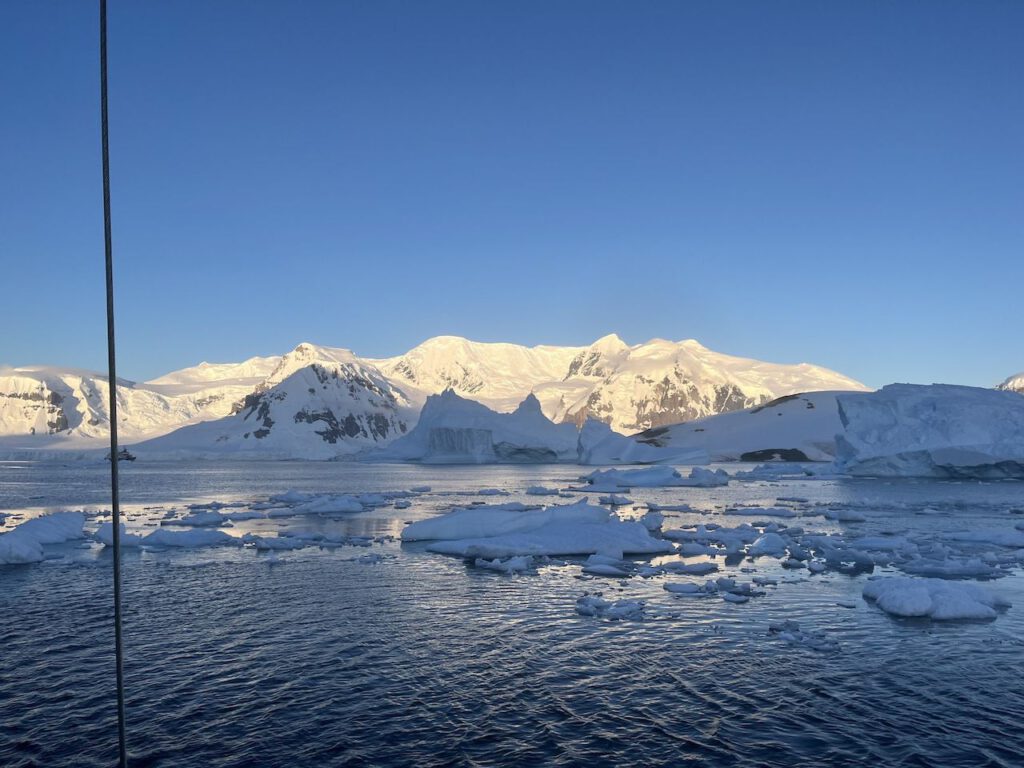
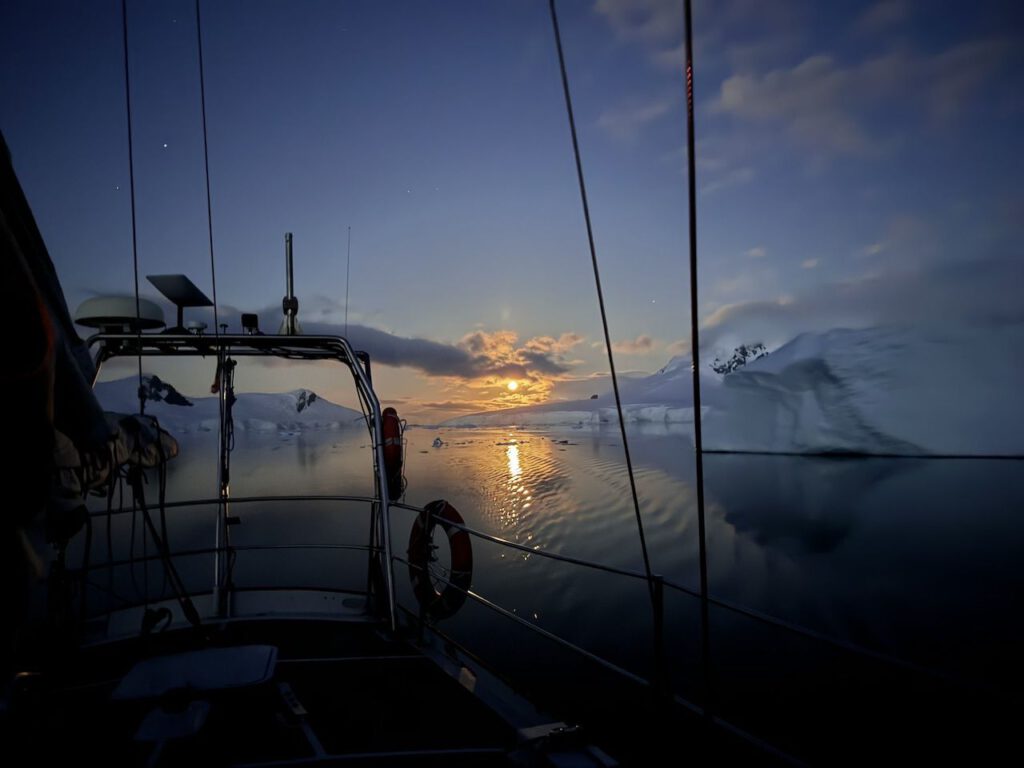
The exit from the bay is extremely icy and takes a lot of time. We pass the Errera Channel and the Graham Passage. Narrow, alpine peaks to the left and right, covered by glaciers. At midnight, we drop anchor in Hidden Bay, south of Paradise Bay, a tiny bay surrounded by glaciers. We spend the night here, well protected. The anchor watch is particularly beautiful this time: the full moon disappears behind the glacier and gives way to a clear starry sky that stretches across the firmament and between the masts of the Selma. The ice around us remains mostly calm, only the glacier cracks and bangs from time to time, a small avalanche goes off somewhere, you can hear it rumble and minutes later the wave crashes into the bay. The Selma rocks gently back and forth and lulls us gently to a well-deserved sleep.
